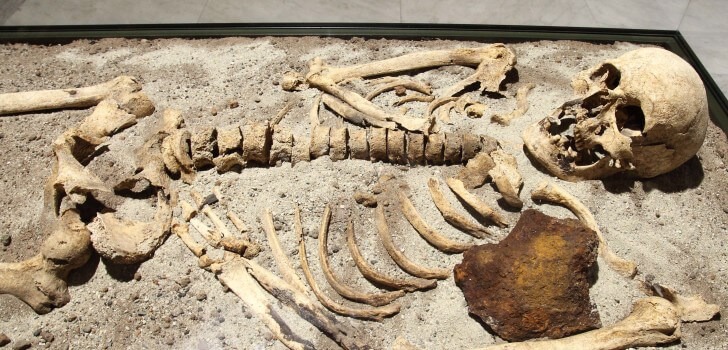Anthropologists have recently discovered that London has been genetically diverse for thousands of years. London has largely been a place for people of different origins to gather, and this was true even thousands of years ago. With an access to a large and diverse gene pool, this can help to explain why London has been largely successful throughout recorded history.
Researchers have been examining human remains that have been stored at the Museum of London. So far, four people from pre-historic London have been studied by having their DNA reconstructed. Two of these people originally came from outside of Europe, one was from continental Europe and the fourth was a London native. In the near future, researchers will analyze more than 20,000 human remains that are stored at the museum. Some of these remains are more than 5,500 years old.
The reason for London’s large amount of diversity can be attributed to the fact that it was a cosmopolitan city following its creation after the invasion by the Romans roughly 2,000 years ago.
Senior curator at the museum Caroline McDonald said, “The thing to remember with the original Londoners is that they were not born here. Every first-generation Londoner was from somewhere else, whether it was somewhere else in Britain, somewhere else on the continent, somewhere else in the Mediterranean, somewhere else from Africa. So the stories we can tell about our ancient population are absolutely relevant to modern contemporary London because these are our stories. These are people just like us.”
By studying the DNA of these ancient individuals, anthropologists are able to determine where they most likely came from, how they probably lived their lives and how they ultimately died. Additionally, the researchers will also be able to get a better idea of what ancient London was like and what types of experiences the people of the city had.
Out of the four skeletons that have been studied, the most complete is that of a girl who died when she was 14 years old. Curators at the museum have nicknamed her the “The Lant Street Teenager”. The analysis shows that she grew up in Northern Africa, and she shares common DNA with many people in ancient southeastern Europe. She also had blue eyes and some Sub-Saharan African ancestry. The girl traveled an extremely long distance in order to reach London.
Other skeletons that have been studied include the “Mansell Street Man”, who was a 45 year old gladiator with African ancestry who grew up in London, and the “Harper Road Woman”, a London native who died shortly after the Romans invaded Britain in AD 43.
The findings from the research and the skeletons themselves will be featured in a new display at the Museum of London starting on November 27.
Stay Connected